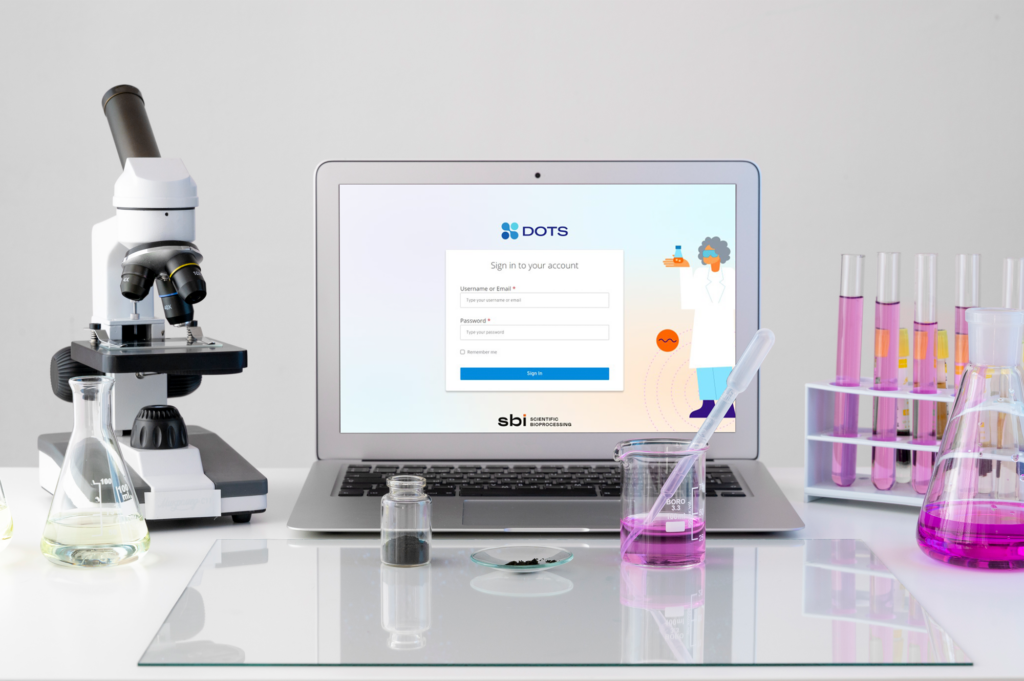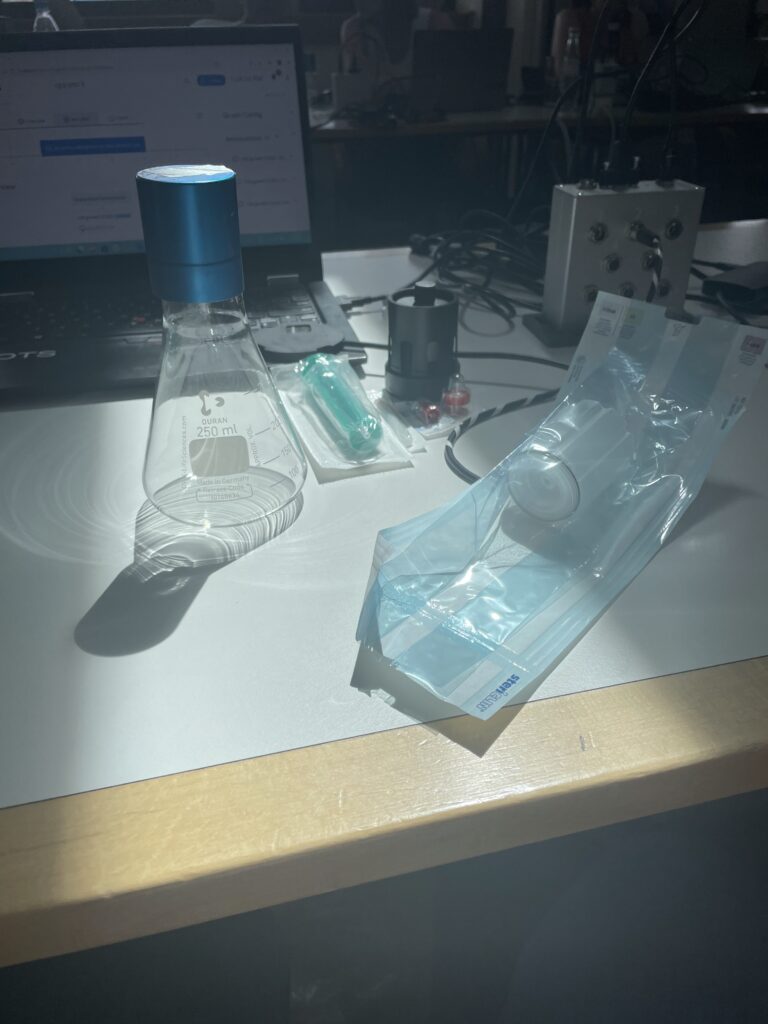DOTS Platform
CLIENT
Scientific Bioprocessing (SBI) / Aquila Biolabs
ROLE
Product & UX Designer
TIMELINE
2021 – 2024
FOCUS
UX redesign · Design system · Product scalability
CHALLANGE
Transform a technically advanced biotech platform into a tool scientists actually enjoy using

Context & Challenge
As the technology matured, the interface fell behind: fragmented navigation, inconsistent visuals, and slow onboarding made it difficult for scientists to fully use the system.
The challenge was to transform this technically advanced platform into a tool scientists actually enjoy using, enabling real-time monitoring across experiments and reducing setup time.
Through laboratory observations and user interviews, we identified critical friction points and opportunities to empower faster scientific decisions.

Research & Insights
Too much context switching
Researchers spent too much time manually switching between modules and spreadsheets.
Visual clutter
Visual clutter hid critical experiment data.
Configuration overhead
Labs wanted pre-configured templates instead of starting from scratch.
Design Process
STEP 01
Information Architecture
Mapped every step – from experiment setup to data export – to uncover redundant interactions.

STEP 02
Wireframes & Prototypes
Designed low-fidelity flows for two user personas: lab technician and researcher. Focused on reducing clicks, simplifying dashboard structure, and surfacing key metrics first.
STEP 03
UI & Design System
Built a reusable design system in Figma: typography, colors aligned with SBI brand, components for dashboards, alerts, parameter cards, sensor-feed panels. Ensured scalability for new sensors (biomass, DO, fluorescence) and vessel types. Used modular card architecture so labs could customise their dashboards.

STEP 04
Validation & Iteration
Conducted usability tests with lab technicians: found that simplified interface reduced experiment set-up time and improved clarity of key metrics. Adjusted based on feedback (e.g., clearer visual hierarchy, contextual tooltips).
Final Design
The redesign delivered:
A unified dashboard where users can visualise biomass, DO, fluorescence in parallel, with intuitive filters and alerts.
Quick-start templates: e.g., “biomass-based feeding in shake flasks” which allowed set up in minutes rather than hours
A modular card system that supported expansion – adding new sensors or vessel types without redesigning the entire UI.
Enhanced data export and sharing flows – labs could take snapshots of running experiments, annotate, and share with colleagues.
Outcome & Impact
-33% Setup Time
Transformed standard shake flask experiments into high-throughput, smart experiments – labs reported fewer manual sampling interruptions and richer data sets.
Data monitoring clarity
Users were able to monitor multiple parameters in real-time, enabling faster decisions and higher experiment accuracy.
-30% Handoff Time
Developer/designer hand-off improved thanks to design system reuse – faster iterations for new sensors and vessel types (internal metric: ~30% less design-dev time, estimate).
+18% User Satisfaction
Positive user feedback: “With the DOTS platform I can combine sensors and actuators in a simple way … this is truly revolutionary for me and my experiments.”
Using the DOTS Platform, we were able to gain actionable insights from our CHO shake flask cultivations. This allows us to reduce sampling as important data are given online and in real time.
Vivian Ott (Centre for Cell Cultivation Techniques, ZHAW, Switzerland)
Learnings & Reflection
Designing for scientists taught me that usability is a form of trust. When every data point matters, the interface must disappear leaving only clarity.
If revisiting this project, I’d invest in guided onboarding and smart alerts that detect anomalies early, further aligning human intuition with machine precision.
The modular design system didn’t just improve consistency it created a shared language between design and engineering teams, accelerating the entire product development cycle.
